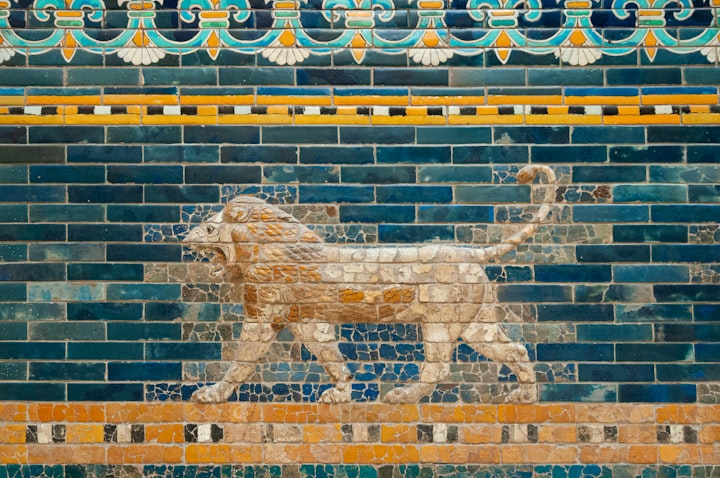Babylon: From Glory to Decline. Interesting facts about Babylon
Introduction
Babylon, the ancient metropolis of Mesopotamia, thrived for over two thousand years. It rose from the Akkadian Empire to its peak under Hammurabi, known for achievements like the Code of Hammurabi and the legendary Hanging Gardens.
Babylonian society had advanced features, granting women unprecedented rights and fostering progress in art, architecture, and commerce.
Despite its grandeur, Babylon faced decline and destruction, falling to Kassite attacks in 1595 BC and later being rebuilt as the capital of the Neo-Babylonian Chaldean Empire. However, the city gradually lost significance, succumbing to the conquest of King Cyrus of Persia.
What happened to Babylon, the world’s first metropolis?
Babylon was a great city-state of ancient Mesopotamia; at one point, it was the largest city in the world.
It was the first city to reach a population above 200,000, and all that remains of it today is a mound of broken mud brick buildings.
What was Babylon like, and how did the great civilization fall?
Babylon was the capital of Babylonia; it arose out of the Akkadian Empire, which had succeeded Sumer.
For more than 2,000 years, Babylonia was the center of Mesopotamian civilization.
It reached its peak under Hammurabi, in the first half of the 18th century BC.
One of his most important achievements was the Code of Hammurabi.
This was one of the earliest written laws.
It contained more than 200 laws on various issues, including land, property, industry, and agriculture.
And more: the code was written on clay tablets and stone pillars.
Another famous feature of Babylon were the hanging gardens.
They were built on terraces, overhanging each other.
The gardens were built by Nebuchadnezzar II.
They were supposed to remind his queen of the fields of her homeland.
The 75-foot-tall platforms were covered with trees and flowers.
It was one of the original seven wonders of the world.
The garden was probably destroyed by an earthquake in the second century.
Babylonian society was quite advanced for its time.
Women enjoyed unprecedented rights.
They were allowed to become priests and start their own businesses.
Babylonian women also shared equal rights over their husband’s property.
Babylonian art and architecture were also ahead of their time.
The Babylonians were skilled jewelers.
They were the first to inset precious gems into metals.
A stunning architectural achievement was the Etemenanki.
It was a ziggurat dedicated to Marduk, Babylon’s chief god.
The 300-foot-tall temple may have inspired the story of the Tower of Babel.
Sadly, only ruins remain.
The main entrance to the inner city of Babylon was called the Ishter Gate.
The portal was decorated with bright blue-glazed bricks.
It was adorned with pictures of bulls, dragons, and lions.
The Ishter Gate gave way to the city’s great processional way.
It was a half-mile-long decorated corridor used in New Year’s rituals.
In Babylon, the New Year started with the spring equinox.
It marked the beginning of the agricultural season.
The Babylonians also made huge granaries to preserve their harvests.
Being skilled in trade and commerce, the Babylonians invented the sales contract.
They exported grain, clay pots, oil, and leather goods.
Education was available for both men and women.
The Babylonians wrote in cuneiform, using over 350 symbols.
Bone and bamboo sticks were used to write on soft clay tablets.
The tablets were then dried in the sun.
Babylonian science was mainly focused on astronomy.
The priests studied the celestial bodies to predict the future.
The Babylonians adopted the lunar calendar invented by the Sumerians.
They also wrote an early diagnostic book for identifying diseases.
Fall of Babylon
Hammurabi built up a formidable, conquering army.
They conquered all of Mesopotamia, establishing a new military presence.
But after Hammurabi’s death, the empire fell into decline.
Ancient Babylonia fell to Kassite attacks in 1595 BC.
Until 612 BC, it was ruled by Assyria and was in constant revolt.
In 689 BC, the city of Babylon was destroyed.
Its walls, temples, and palaces were raised.
The rubble was thrown into the Arakhtu River.
The city was later rebuilt, and the Assyrian rule was overthrown.
Babylon became the capital of the Neo-Babylonian Chaldean Empire.
But a century later, the empire was taken over by King Cyrus of Persia.
The city of Babylon gradually shrank in importance.
